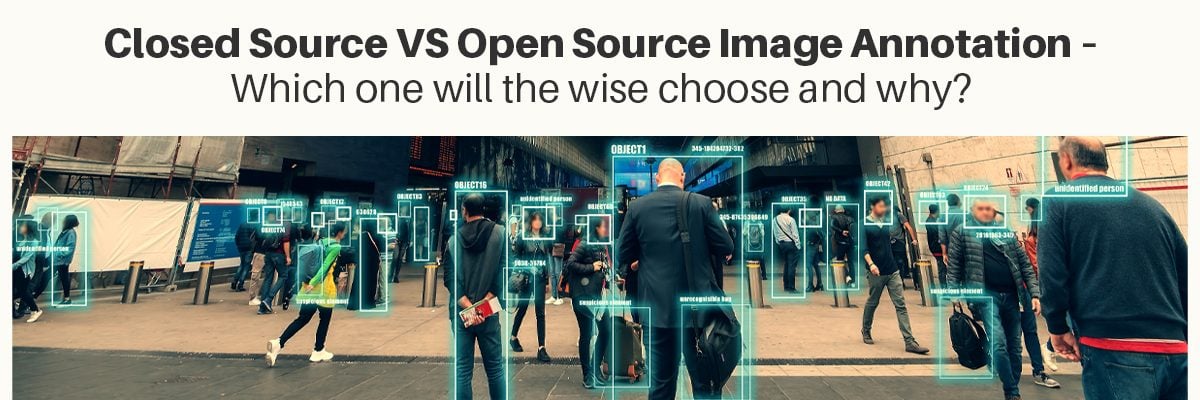
Could computers be trained to recognize cuteness in cats? What would you like to do then? Have trouble concentrating on cat pictures? Are you one of those tech enthusiasts who wants a change for your convenience? Do you remember when you tried to convince your computer that the stop sign wasn’t a yield sign when you wanted it to believe it was one? This is no longer a concern for fellow technology enthusiasts. To keep yourself engaged and entertained during the annotation and labeling process, there is a plethora of open-source tools that you can choose from. The use of image annotation tools has emerged as a superhero in the world of pixelated chaos. Using annotation tools, images can be identified in a fast and efficient way. Therefore, machines will become capable of understanding the world the same way as humans do, and computer programs will be able to make better decisions.
The rapidly evolving digital world we live in has paved the path for the requirement of image annotation tools that are accurate, unbiased, and quick. From self-driving cars, medical, augmented reality, agriculture, and robotics, to e-commerce – the dependency on artificial intelligence is on the rise. Thus, the need for reliable and efficient image annotation sources is also increasing by leaps and bounds. In this article, we will draw a comparison between open-source and closed-source image annotation and cite real-life examples to come to a positive conclusion.
As training data for AI models, image annotation is time-consuming, tedious, and well worth the effort since it is the key to algorithms’ success. Each image must be annotated so that machines can read it correctly (without errors or bias). In order to develop error-free AI models of high quality, the image annotation process must be accurate and precise in nature. As a result, the output we receive is unbiased, accurate, and precise to say the least.
Pros: The Power of Open Source Image Annotation Tools
Doubtlessly, image annotation via open sources is gaining popularity because of affordability, easy access, and customization facilities. As most open sources are continuously in the improvement stage, it is luring users to get the free add-ons.
Cons: Challenges of Open-source Image Annotation
Though the thought of free or less expensive tools might be enticing initially. Open-source might only be a temporary pilot tool for those who care about scalability, innovation, and continuous development. On top of this, not all open-source tools are capable enough to produce high-quality outputs. The more precise the annotation and labeling of each image or video, the better off you will be if you are actually trying to transform traditional practices through AI.
Annotating Images Accurately: Tools & Techniques
Be it via open-source or closed-source tools. Image annotation is imperative to enhance the capability of machine learning algorithms to ensure they precisely identify and interpret data in visual form. When images are annotated by the book, AI models are able to function properly and recognize objects, regions, and features presented by images.
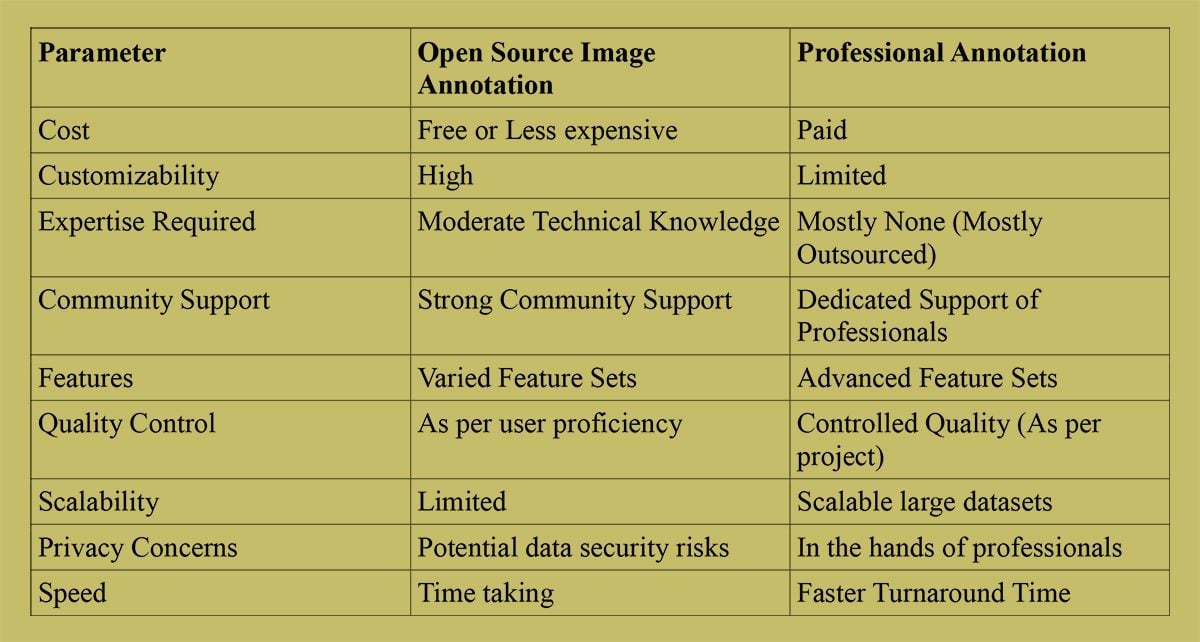

LabelImg is a used tool for annotating images, allowing users to draw bounding boxes around objects and add labels. It is implemented in Python using the Qt library. Here’s a repository – https://github.com/tzutalin/labelImg


Once you install LabelImg and have a set of images ready to be annotated – you can use the below-mentioned python script to open Labellmg for every single image. The annotated images will be saved as XML files.
## https://github.com/tzutalin/labelImg
import os
import subprocess
image_dir = "/path/to/your/image/directory"
# List all image files in the directory
image_files = [f for f in os.listdir(image_dir) if f.endswith(".jpg") or f.endswith(".png")]
# Path to LabelImg executable
labelimg_executable = "/path/to/labelImg.py"
# Loop through the image files and open LabelImg for annotation
for image_file in image_files:
image_path = os.path.join(image_dir, image_file)
subprocess.call([labelimg_executable, image_path])
COCO Annotator is a web-based tool designed specifically for annotating images in the COCO format. It is famed for supporting varied types of annotations, namely bounding boxes, polygons, and keypoints. This annotation tool has been built using JavaScript and Django.
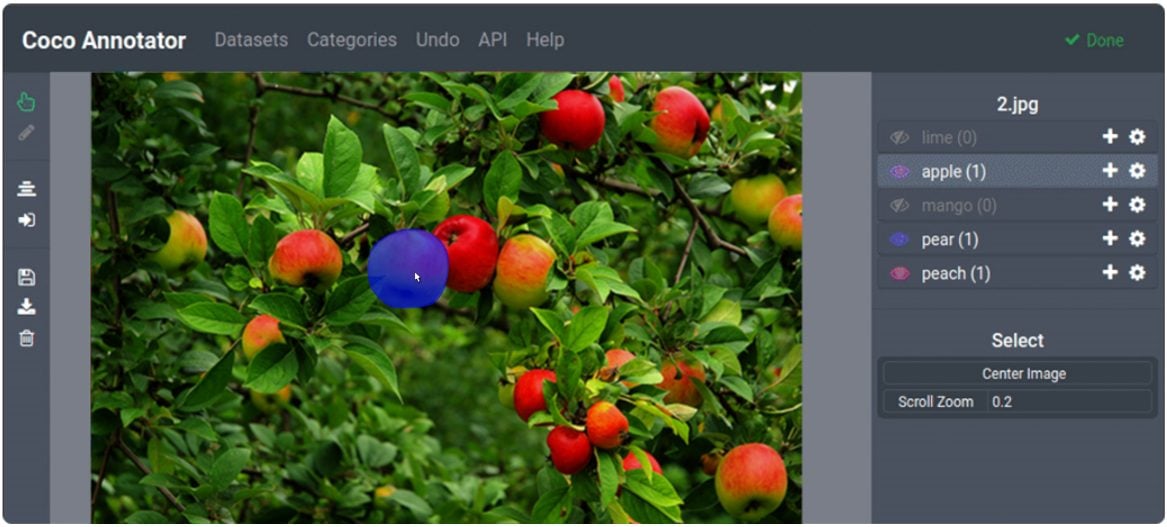

VGG Image Annotator (VIA) is an image annotation tool developed by the Visual Geometry Group at the University of Oxford. It gives users the freedom to annotate different types of objects including points, lines, and regions. The interface provided by VIA is user-friendly and intuitive for labeling images.


Labelbox is a platform that allows users to annotate images for tasks such as object detection, image segmentation, and classification. This tool offers numerous collaboration features that efficiently integrate with machine learning frameworks.
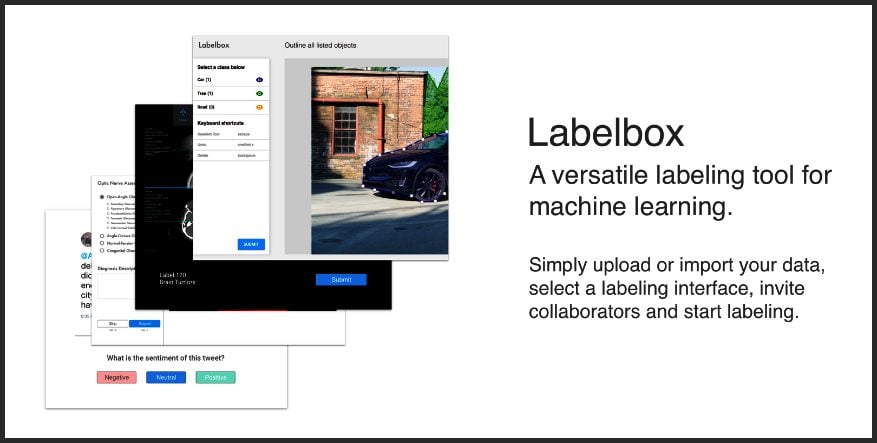

Supervisely – This tool supports image annotation and also provides features like data versioning and model deployment.
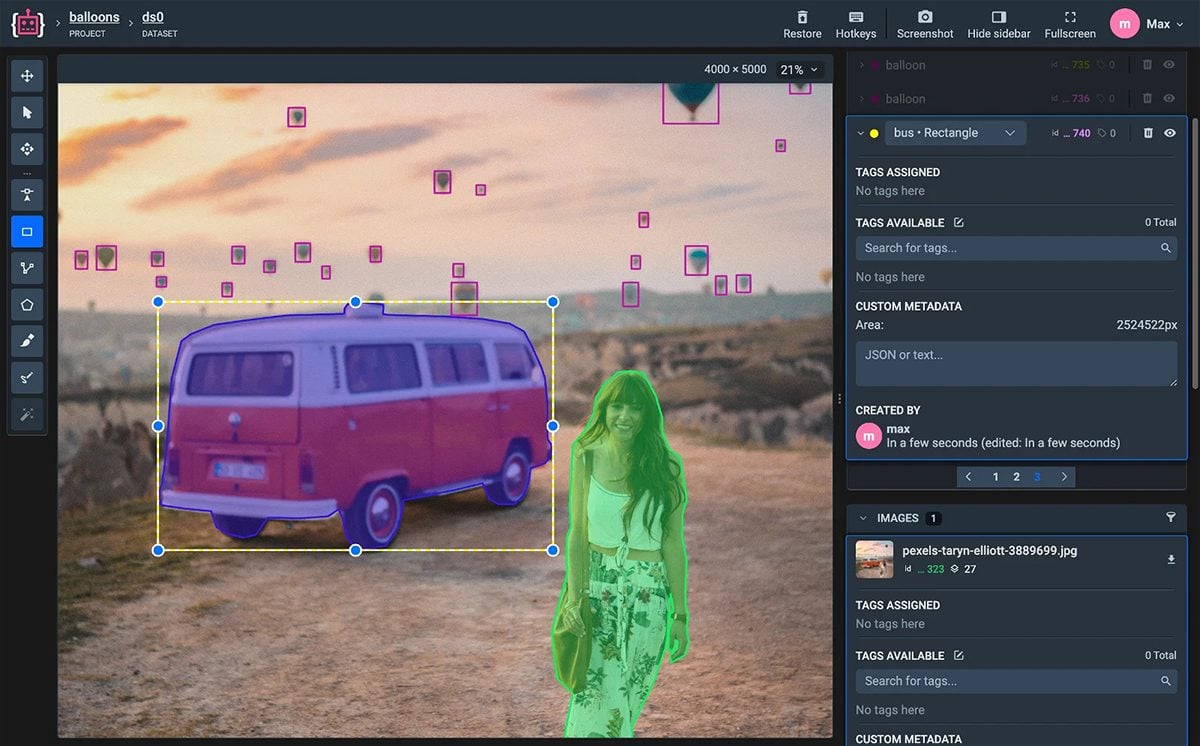



Image annotation tools are used to annotate images across industries. Using image annotation tools, such as pedestrians, vehicles, and traffic signs, a driverless car can navigate safely and make informed decisions. Also, self-driving cars are able to ride safely and make informed decisions. Therefore, in medical imaging, image annotations assist healthcare professionals in flawless diagnosing. Patients receive effective treatment based on this information. In addition to categorizing products and improving search functionality, image annotation is used by e-commerce platforms in order to improve the overall shopping experience for customers, by improving their experience. The utilization of image annotation tools in the below-mentioned examples showcases their versatility and importance in a variety of different domains.
Let’s understand the practical applications of image annotation tools by examining a few examples from real-life situations:
1. Vehicles that drive themselves
For autonomous vehicles to be capable of perceiving and navigating the environment faultlessly, it is imperative that only reliable image annotation tools be used. These above-mentioned tools facilitate self-driving vehicles to make informed decisions by detecting pedestrians, vehicles, and traffic signs. Thus, ensuring the safety of passengers with every ride.
2. Medical Imaging
Talking about the medical industry, radiologists are enjoying the advantages of artificial intelligence solutions. Clinical practitioners garner useful medical data using AI that helps them read and analyze reports of X-rays, CT scans, and/or magnetic resonance images with enhanced accuracy. With better data and visibility of patient ailments, doctors are able to treat patients with better care & diligence.
3. The role of visual search in e-commerce
There is widespread usage of image annotation in the e-commerce industry. Products are categorized in numerous parameters like functionality, color, style, and visual search to make the customer’s journey easy, enjoyable, and convenient.
4. Augmented Reality (AR)
Image Annotations are used in AR applications for placing virtual objects and information properly as per the real-world environment. Starting with the depth, scale, and orientation of objects – everything is annotated for a realistic and immersive AR experience for users.
5. Robotics and Automation
Robotics professionals can manipulate objects with the help of image annotation tools. When robots are labeled with pertinent attributes, they gain the power to perceive and interact with the environment efficiently.
While it is true that the popularity of open-source image annotation tools is on the rise, however, they come along with numerous disadvantages. It becomes difficult to scale big projects and ensure high-quality annotated images using open-source image annotation tools. Hence, opting for closed-source tools would be a prudent move.
If you are a tech enthusiast, you might like to know more about the impact of Prompt Engineering in AI.
Mirza Arique Alam is a passionate AI & ML Writer, and Published Author. He creates engaging and informative content at the intersection of Artificial Intelligence and technology to inspire and educate the world about the limitless potential of artificial intelligence. Currently working with Cogito and Anolytics.






